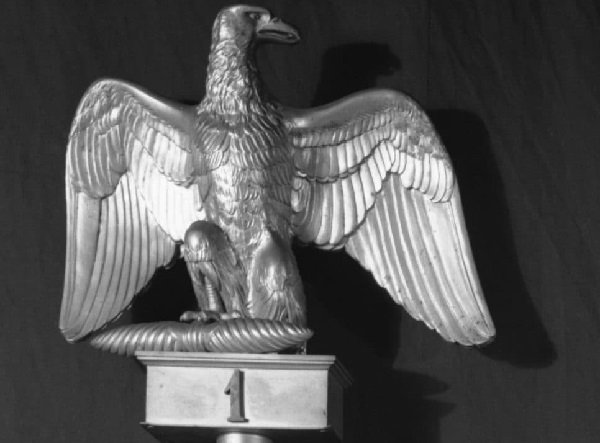Throughout history, the United States has witnessed a series of audacious thefts that captured the attention of the nation and the world. From art heists that stripped museums of priceless masterpieces to daring robberies targeting financial institutions, these high-profile thefts left a lasting impact on the American public. In this list, we explore 15 of the most significant thefts ever to occur on American soil, ranging from stolen artwork worth hundreds of millions to brazen robberies that netted vast sums of cash and precious treasures. These incidents serve as reminders of the ingenuity and audacity of those who sought to exploit vulnerabilities in security systems and escape with extraordinary riches.
Isabella Stewart Gardner Museum Art Heist (1990)
The Isabella Stewart Gardner Museum Art Heist of 1990 ranks among the most daring and perplexing thefts in art history. Disguised as police officers, two individuals infiltrated the renowned museum in Boston and stole 13 priceless artworks, including pieces by Vermeer, Rembrandt, and Degas. With an estimated value of $500 million, the stolen masterpieces have never been recovered. The empty frames serve as a haunting reminder of this audacious crime, which continues to captivate the public’s imagination and elude resolution, leaving a void in the art world that has yet to be filled.

This brazen heist has not only highlighted the vulnerability of cultural treasures but has also sparked significant changes in the art security landscape. It has prompted increased focus on the protection of valuable artworks and led to advancements in museum security systems worldwide. The Isabella Stewart Gardner Museum Art Heist stands as a testament to the enduring allure and mystery surrounding high-profile art thefts, leaving an indelible mark on the history of art crime.
Gardner Museum Napoleonic Eagle Finial (1970)
The theft of the Gardner Museum Napoleonic Eagle Finial in 1970 added another layer of intrigue to the already notorious Isabella Stewart Gardner Museum. Separated from the larger art heist in 1990, this unique historical artifact was snatched from the museum’s collection. The finial, a significant symbol of Napoleonic France, remains missing to this day. Its disappearance has left a void in the museum’s collection and serves as a reminder of the challenges in recovering stolen historical artifacts.
See also: 9 Most Famous Prison Escapes in American history

The theft of the Napoleonic Eagle Finial not only represents a loss of cultural heritage but also underscores the ongoing threat to museums and their collections. The case remains unsolved, with questions lingering about the motives behind the theft and the whereabouts of the finial. This incident stands as a stark reminder of the need for heightened security measures and international cooperation to safeguard invaluable artifacts from being lost to history.
Lufthansa Heist (1978)
The Lufthansa Heist of 1978 stands as one of the most audacious and lucrative robberies in American history. Orchestrated by a gang led by James Burke, also known as “Jimmy the Gent,” the heist took place at the Lufthansa cargo building at John F. Kennedy International Airport. The thieves made off with approximately $5 million in cash and $875,000 in jewelry, making it one of the largest cash thefts ever recorded at the time. The meticulously planned operation captured the public’s imagination and inspired the movie “Goodfellas” based on the events.

The Lufthansa Heist not only showcased the criminal ingenuity of the perpetrators but also exposed the vulnerabilities within airport security systems. Despite extensive investigations, the majority of the stolen loot was never recovered, and the identities of some involved remained undisclosed. This daring robbery left an indelible mark on American crime history, serving as a reminder of the audacity of organized crime and the challenges faced in bringing the culprits to justice.
United California Bank Burglary (1972)
Located in Laguna Niguel, California, the bank fell victim to a meticulously planned burglary, resulting in the theft of approximately $9 million worth of cash, gold, silver, and negotiable securities. The audacity of the thieves left authorities and the public astonished, and the incident became an iconic symbol of high-stakes criminality during that era.

The United California Bank Burglary highlighted the need for improved security measures within financial institutions. Despite investigations and significant rewards, only a small fraction of the stolen items were recovered, and the identities of the perpetrators remain a mystery. This audacious heist left an enduring legacy in the annals of crime, showcasing the meticulous planning and execution required to carry out such a brazen act, while also serving as a reminder of the ongoing challenges faced in safeguarding valuable assets.
Dunbar Armored Heist (1997)
Led by former Dunbar Armored employee Allen Pace, the heist took place in Los Angeles and resulted in the theft of approximately $18.9 million. Pace meticulously planned the operation, recruiting a team of accomplices to carry out the robbery. The daring theft captivated the public’s attention and became a subject of fascination, reflecting the audacity and meticulous planning required to execute such a high-stakes crime.
See also: 14 Famous Death Penalties of US History

The Dunbar Armored Heist not only showcased the criminal ingenuity of the perpetrators but also exposed the vulnerabilities within armored transport and security systems. Despite the recovery of a significant portion of the stolen money and the apprehension of several involved individuals, the exact whereabouts of a substantial sum remains unknown. This brazen robbery stands as a reminder of the constant challenges faced by security agencies in thwarting organized criminal operations and protecting valuable assets.
Antiquities from the Denver Art Museum (2008)
The theft of antiquities from the Denver Art Museum in 2008 left a significant void in the museum’s collection and raised concerns about the security of cultural treasures. The stolen items included valuable Chinese jade and other artworks, with an estimated value of around $20 million. This audacious heist highlighted the ongoing challenges faced by museums in safeguarding priceless artifacts and the lengths to which criminals are willing to go to exploit vulnerabilities in security systems.

Despite investigations and efforts to recover the stolen antiquities, the majority of the stolen items remain missing. The incident served as a wake-up call for museums worldwide, prompting a renewed focus on enhancing security measures and implementing robust protocols to protect valuable collections. The theft from the Denver Art Museum serves as a reminder of the importance of preserving cultural heritage and the constant need to remain vigilant in the face of art theft and illicit trafficking.
Gold Nuggets of Wells Fargo Museum (2012)
The theft of gold nuggets from the Wells Fargo History Museum in 2012 left both museum officials and the public astounded. Located in San Francisco, the museum fell victim to a daring heist in which thieves made off with several valuable gold nuggets. The stolen gold pieces, with their historical significance and monetary value, added to the allure of the crime. The incident highlighted the vulnerability of even well-established institutions and the ongoing challenges in safeguarding precious artifacts.

Despite efforts to apprehend the perpetrators and recover the stolen gold nuggets, the majority of the stolen items remain missing. The theft from the Wells Fargo History Museum serves as a reminder of the enduring allure of gold and the audacity of criminals who target valuable assets. This incident prompted increased security measures and raised awareness about the need for constant vigilance in protecting historical artifacts of significant cultural and financial importance.
Boston Museum of Fine Arts Theft (1972)
The theft at the Boston Museum of Fine Arts in 1972 shocked the art world and exposed the vulnerabilities within museum security systems. During the early hours of February 12, a group of thieves stole a collection of valuable artworks, including paintings by Vermeer, Rembrandt, and Manet. The stolen pieces were estimated to be worth over $1 million at the time. This audacious heist shed light on the need for enhanced security measures and protocols to safeguard invaluable works of art.

Despite extensive investigations and substantial rewards, the stolen artworks were never recovered, leaving a void in the museum’s collection. The Boston Museum of Fine Arts theft remains one of the largest unsolved art heists in history, captivating the public’s fascination and inspiring numerous theories. This incident served as a wake-up call for museums worldwide, prompting a reassessment of security practices and a renewed commitment to protecting cultural treasures from theft and loss.
The Star of India Sapphire (1964)
The theft of the Star of India Sapphire in 1964 captivated the world with its audacity and the value of the stolen gem. The Star of India, a rare and priceless sapphire weighing 563 carats, was stolen from the American Museum of Natural History in New York City. The thief, Jack Murphy, known as “Murph the Surf,” was part of a gang that managed to evade the museum’s security and snatch the valuable gem. The daring heist put a spotlight on the vulnerability of even the most renowned institutions and highlighted the lengths criminals would go to possess extraordinary treasures.
See also: 10 Richest Americans in the 1800s

Although the Star of India Sapphire was recovered shortly after the theft, its journey was not without its share of drama. It was found buried in a Miami bus station locker, damaged but largely intact. The incident served as a wake-up call for museums and institutions worldwide, prompting a reevaluation of security measures to protect invaluable and iconic artifacts. The Star of India Sapphire theft stands as a testament to the enduring fascination with precious gemstones and the ongoing efforts required to safeguard such remarkable treasures.
Wright Flyer Engine (2003)
The theft of the Wright Flyer Engine in 2003 sent shockwaves through the aviation community and underscored the significance of preserving historical artifacts. The engine, which belonged to the Wright brothers’ iconic aircraft that made the first powered flight in 1903, was stolen from the Wright Brothers National Memorial in Kill Devil Hills, North Carolina. This brazen act of theft robbed the world of an invaluable piece of aviation history and showcased the lengths criminals would go to exploit vulnerabilities in museum security.

Despite efforts to recover the stolen engine and a substantial reward offered for its return, the whereabouts of the artifact remains unknown. The theft of the Wright Flyer Engine serves as a stark reminder of the challenges faced in protecting and preserving our cultural heritage. The incident prompted a reevaluation of security protocols at historical sites and emphasized the ongoing need to safeguard significant historical artifacts for future generations.
Conclusion
The 15 high-profile thefts discussed here stand as a testament to the allure and ambition of individuals driven to acquire great wealth or rare treasures by any means necessary. While some of these thefts remain unsolved mysteries, others have led to the recovery of stolen items, albeit often at great cost. These incidents have prompted advancements in security systems and highlighted the importance of protecting our cultural heritage and valuable assets. As we reflect on these daring thefts, we are reminded of the enduring fascination and allure of criminal acts that capture the imagination of the public, leaving a mark on history as reminders of both the vulnerability of our most prized possessions and the unwavering efforts to apprehend those responsible.